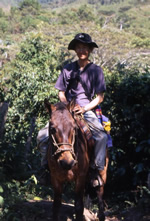How To Write the Perfect Travel Article
How To Write the Perfect Travel Article
Travel writing is part reporting, part diary and part providing traveler information. Travel writers create their art using a multitude of different styles and techniques but the best stories generally share certain characteristics, notably:
1) Clear writing style, without affectation, used by a writer who knows the point of the story, gets to it quickly and gets it across to the reader strongly and with brevity and clarity.
2) Strong sense of the writer’s personality, ideally demonstrating intelligence, wit and style.
3) Use of the writer’s personal experiences, other anecdotes and quotations to add life to the piece.
4) Vivid reporting - the ability of the writer to convey to readers, using as many of the senses as possible, the travel experience through the use of words alone.
5) High literary quality and the accurate use of grammar and syntax.
6) Meaty, practical and accurate information that is useful to the reader.
Be Fresh
Give your story a fresh point of view and, if at all possible, cover some out-of-the-ordinary subject matter. Be creative in your writing. Strive for the best and strongest use of English and the most original and powerful metaphors and similes.
Be Personal
Take your own approach to a location you’ve visited, an activity you’ve tried or an adventure that thrilled you. What was it that really excited or inspired you? Identify it and get it across to your readers.
To stand out from the crowd, your story must have a personal voice and point of view. Remember that most places you write about will already have been written about before. Your challenge is to find something new and original to say.
Be Funny
Travel writing should mostly have a light, bright, lively and fun tone. Travel, the process of leaving the familiar to go to the foreign and unfamiliar, is often rich in comedy and comical events. Incorporate comedy into your writing where appropriate and don’t be afraid to make your readers laugh. Also, don’t be afraid to incorporate mishaps into your pieces. These can be just as worth reading about, maybe more so, particularly if they also incorporate an element of comedy or humor.
Be Surprising
Surprise your reader. Give the reader something out of the ordinary; something that only someone who has been to the location would know. Do this by trying unusual activities, meeting new people, and getting involved in strange scenes as you travel.
Be Balanced
Travel writing must blend your personal observations, descriptions and commentary with practical information that is useful to your readers. The precise balance depends on the outlet you are aiming your story at but rarely should a good travel piece comprise more facts than description. Two-thirds or even three-quarters colorful description to one-third or one-quarter facts would be a reasonable guideline to start from.
Be a Quoter
Work in quotes from visitors to locations, or participants in activities. Let them express their thoughts about how they feel about a place or activity. Quotes lift stories.
Think Like Your Reader
You need to develop as clear an impression as possible of what readers of the publications you are targeting want to read, their travel aspirations, how they like articles written and what information they want to know. You want to be able to think like your reader. Only then will you be able to identify how you can help your reader. Only then should you start writing your article.
The Big Picture: What is the Main Point You Want to Get Across to Your Reader?
Good travel stories have a definite, central theme and it will greatly improve your writing if you can identify the central themes of your articles before you try to write them. Decide at the outset what main point about a location or activity you want to convey. This is the “big picture” and you then work your impressions and facts around it. Identifying the big picture early on will also help you structure your piece sensibly and help you decide what information you need to include and, equally importantly, what you can and should leave out.
This report is extracted from The Insider Secrets of Freelance Travel Writing, a tutored online course that shows you how to create top quality travel writing that sells and how to get paid to travel the world free.www.FreelanceTravelWriter.com/course.htm.
Martin Li is a travel writer and photographer based in London.
 |
No comments:
Post a Comment